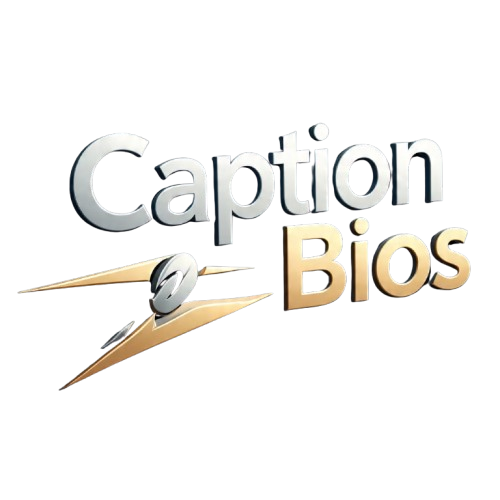DTM stands for “Doing Too Much” in modern texting and means someone is being over-the-top or extra. It can be playful between friends but might sound rude to others depending on your tone. You should avoid using DTM in professional emails or formal conversations since it’s too casual.
Instead, try saying “you’re going all out” or “that’s quite elaborate” for a nicer approach. DTM is popular on social media platforms like TikTok and Instagram where being dramatic is often celebrated.
What Does DTM Mean in Text?
DTM primarily stands for “Doing Too Much.” This acronym describes behavior that’s excessive, over-the-top, dramatic, or unnecessarily elaborate. It’s become increasingly popular among younger generations who frequently use it to comment on someone’s actions, appearance, or general behavior.
Primary Definition: Doing Too Much
When someone says you’re DTM, they’re suggesting your actions are excessive or exaggerated. This could apply to various situations:
- Social media behavior: Posting excessive selfies or overly dramatic captions
- Fashion choices: Wearing extremely flashy or attention-grabbing outfits
- Relationship dynamics: Being overly clingy, romantic, or dramatic
- Work presentations: Including unnecessary graphics, animations, or lengthy explanations
- Daily conversations: Using overly formal language in casual settings
Alternative Meanings
Context determines DTM’s interpretation. Other possible meanings include:
Don’t Touch Me: Used sarcastically or when genuinely annoyed. Often appears in playful banter or when someone wants space.
Dead To Me: A harsh expression indicating complete emotional disconnection. This usage typically appears during serious conflicts or relationship breakdowns.
Down To Meet: Rarely used invitation to hang out or meet up. This interpretation is less common and primarily appears in specific regional dialects.
Do Too Much: Grammatical variant of “Doing Too Much” with identical meaning and usage patterns.
Regional and Cultural Variations
DTM’s interpretation varies across different communities and age groups. Gen Z users predominantly understand it as “Doing Too Much,” while older generations might interpret it differently. Regional slang also influences meaning, with some areas using DTM for completely different concepts.
Is DTM Polite or Rude?
DTM’s politeness depends entirely on context, tone, and relationship dynamics. The same acronym can be playful teasing between friends or harsh criticism from strangers.
Playful Usage
Among close friends, DTM often serves as lighthearted mockery. Friends use it to acknowledge someone’s dramatic tendencies without genuine malice. This playful usage typically includes:
- Laughing emojis or tone indicators
- Follow-up messages showing support
- Reciprocal teasing between participants
- Established patterns of friendly banter
Neutral Observation
DTM can describe situations objectively without emotional charge. When used neutrally, it simply points out excessive behavior without judgment. This usage appears in:
- Commentary on public figures or celebrities
- Descriptive observations about events or situations
- Academic or analytical discussions about behavior
- News reporting or social media analysis
Potentially Offensive Usage
DTM becomes rude when used judgmentally or dismissively. Warning signs include:
- Harsh tone without softening language
- Repeated criticism of the same person
- Public embarrassment or shaming
- Lack of constructive feedback or alternatives
Understanding these distinctions prevents miscommunication and relationship damage. Always consider your audience and intent before using potentially ambiguous acronyms.
Professional Alternatives to “DTM”

Professional environments require diplomatic language that conveys feedback without seeming dismissive or unprofessional. DTM’s informal nature makes it inappropriate for workplace communications, client interactions, or formal presentations.
Diplomatic Feedback Phrases
“That approach might be more elaborate than necessary.” This phrase acknowledges effort while suggesting simplification without offense.
“We could streamline this for better clarity and impact.” Focuses on improvement rather than criticism, emphasizing positive outcomes.
“Let’s focus on the core message to maximize effectiveness.” Redirects attention toward essential elements without dismissing existing work.
“This could benefit from a more concise approach.” Suggests improvement while maintaining professional respect for current efforts.
“Consider simplifying to enhance audience engagement.” Links suggestions to beneficial outcomes rather than personal criticism.
Industry-Specific Alternatives
Different professional fields require tailored language:
Marketing/Advertising: “Let’s optimize for clearer brand messaging” or “This could be more targeted to our demographic.”
Education: “Students might benefit from a more focused presentation” or “Consider breaking this into digestible segments.”
Healthcare: “Patients respond better to straightforward explanations” or “Simplifying terminology improves understanding.”
Technology: “This feature set might overwhelm users” or “Let’s prioritize core functionality.”
Legal: “The document could be more concise for client comprehension” or “Consider summarizing key points.”
Polite or Casual Alternatives to “DTM”
Casual conversations benefit from gentler alternatives that maintain friendly tone while conveying similar messages. These options preserve relationships while providing feedback.
Encouraging Alternatives
“You’re really going all out!” Acknowledges effort positively while noting the extensive nature of someone’s actions.
“That’s some serious dedication!” Transforms potential criticism into recognition of commitment and effort.
“You’ve put your whole heart into this.” Emphasizes passion and commitment rather than excess or drama.
“That’s definitely making a statement!” Neutrally acknowledges bold choices without judgment or criticism.
Playful Alternatives
“Someone’s feeling extra today!” Uses contemporary slang that’s less harsh than DTM while maintaining playful tone.
“Bringing the drama, and I’m here for it!” Shows support while acknowledging dramatic tendencies.
“That’s a whole production!” Describes elaborate efforts with humor rather than criticism.
“You never do anything halfway!” Celebrates thoroughness while noting extensive approach.
Supportive Alternatives
“I love how passionate you are about this.” Reframes intensity as positive passion rather than excessive behavior.
“Your enthusiasm is contagious!” Focuses on positive energy rather than dramatic tendencies.
“You always bring such energy to everything.” Acknowledges someone’s vibrant approach without negative implications.
15 Polished Reply Examples for “DTM”
Responding appropriately to DTM comments maintains relationships while addressing the feedback. These examples cover various scenarios and relationship dynamics.
Casual and Playful Responses
“LOL, guilty as charged! That’s just how I roll.” Owns the behavior while maintaining lighthearted tone and showing confidence.
“DTM is literally my brand at this point.” Embraces the characterization while showing self-awareness and humor.
“You know I can’t do anything halfway!” Acknowledges the tendency while framing it as positive thoroughness.
“Okay, okay, I’ll dial it back… maybe.” Shows willingness to adjust while maintaining playful uncertainty.
“But where’s the fun in doing just enough?” Questions the criticism while defending enthusiastic approach to life.
Humble and Reflective Responses
“You’re probably right – I got carried away.” Accepts feedback gracefully while showing self-reflection and maturity.
“Thanks for the reality check. I needed that.” Appreciates honest feedback while showing growth mindset.
“I hear you. Sometimes I don’t realize how intense I can be.” Demonstrates self-awareness and openness to feedback.
“Fair point. I’ll try to find more balance next time.” Acknowledges validity of criticism while committing to improvement.
“Appreciate the honesty – I genuinely didn’t see it that way.” Shows gratitude for different perspective while remaining open-minded.
Professional and Diplomatic Responses
“Thank you for that feedback. I’ll review and simplify accordingly.” Maintains professionalism while showing responsiveness to input.
“I appreciate your perspective and will adjust my approach.” Demonstrates flexibility and respect for colleague’s viewpoint.
“You raise a valid point. Let me refocus on the essential elements.” Acknowledges feedback while outlining specific corrective action.
“Thanks for pointing that out. I’ll streamline for better clarity.” Shows appreciation for feedback while committing to improvement.
“Good observation. I’ll be more mindful of keeping things concise.” Accepts criticism constructively while promising future awareness.
When to Use or Avoid “DTM”
Understanding appropriate contexts for DTM prevents miscommunication and maintains positive relationships across different settings and audiences.
Appropriate Usage Contexts
Informal group chats with close friends: Established relationships with clear communication patterns make DTM acceptable for playful teasing.
Social media comments among peers: Casual online environments where slang is expected and understood by the audience.
Text conversations with understanding recipients: Personal messages where both parties understand internet slang and communication styles.
Meme culture and internet humor: Online spaces dedicated to humorous content where acronyms enhance comedic effect.
Generation Z communication: Age-appropriate contexts where DTM is widely understood and culturally relevant.
Situations to Avoid DTM
Professional emails and workplace communication: Formal environments require diplomatic language rather than casual internet slang.
Conversations with older generations: Age gaps may create confusion or offense due to different communication styles and expectations.
Sensitive or emotional discussions: Serious topics require clear, compassionate language rather than potentially dismissive acronyms.
Cross-cultural communications: International contexts may lack cultural understanding of American internet slang and abbreviations.
Academic or educational settings: Formal learning environments typically require standard language rather than informal abbreviations.
Risk Assessment Guidelines
Before using DTM, consider:
- Relationship strength: How well do you know the recipient?
- Communication history: Have you used similar language before successfully?
- Current mood/context: Is the conversation light or serious?
- Potential consequences: Could misunderstanding damage the relationship?
- Alternative options: Would clearer language serve better?
Why Understanding Nuance Matters

Digital communication lacks vocal tone, facial expressions, and body language that provide context in face-to-face conversations. This limitation makes acronyms like DTM particularly prone to misinterpretation.
Communication Complexity
Modern digital communication requires sophisticated understanding of:
Context switching: Adapting language style to different platforms, audiences, and situations throughout the day.
Tone inference: Reading emotional undertones in text-based messages without traditional vocal or visual cues.
Cultural awareness: Understanding how different communities interpret identical language or symbols.
Generational differences: Navigating varying communication preferences across age groups and demographics.
Relationship Preservation
Misunderstood acronyms can damage relationships quickly. DTM might seem playful to the sender but harsh to the recipient, especially if:
- Previous conversations have been more formal
- The recipient is experiencing stress or sensitivity
- Cultural backgrounds create different interpretation frameworks
- Power dynamics exist (boss/employee, teacher/student)
Digital Empathy
Successful digital communication requires empathy and emotional intelligence. This includes:
Perspective-taking: Considering how recipients might interpret messages given their current circumstances and communication history.
Clarification habits: Following up on potentially ambiguous messages to ensure understanding and prevent conflict.
Adaptation skills: Adjusting communication style based on feedback and recipient responses over time.
DTM in Pop Culture and Social Media
Social media platforms have accelerated DTM’s adoption and evolution. Different platforms use the acronym in distinct ways that reflect their unique cultures and user bases.
Platform-Specific Usage
TikTok: DTM frequently appears in comments describing elaborate makeup tutorials, extreme fashion choices, or dramatic storytelling videos. Users embrace “extra” behavior as entertainment value.
Instagram: Story reactions and comment sections use DTM to describe everything from elaborate food presentations to over-the-top workout routines.
Twitter: Political commentary and celebrity gossip often incorporate DTM to describe public figures’ dramatic statements or actions.
Snapchat: Private messages between friends use DTM for playful commentary on each other’s snaps and stories.
Discord: Gaming communities and interest-based servers use DTM to describe players who take games too seriously or invest excessive effort in casual activities.
Influencer Impact
Social media influencers have significantly shaped DTM’s meaning and acceptability. Many creators embrace being “DTM” as part of their brand, celebrating dramatic, over-the-top content as entertainment value. This has made DTM more acceptable and even desirable in certain contexts.
Meme Culture Integration
DTM has become integral to internet meme culture, appearing in:
- Reaction images and GIFs
- Caption templates and formats
- Comment section humor
- Viral video descriptions
- Trending hashtag combinations
How to Replace DTM in Specific Scenarios
Context-appropriate language enhances communication effectiveness while maintaining intended meaning. Here are specific scenario replacements for DTM:
Professional Email Communications
Instead of: “His presentation was DTM.” Use: “The presentation could benefit from a more focused approach to key points.”
Instead of: “This project is getting DTM.” Use: “Let’s streamline this project to ensure clarity and efficiency.”
Instead of: “She’s being DTM about the deadline.” Use: “She’s showing considerable urgency regarding the deadline.”
Family and Personal Relationships
Instead of: “You’re being DTM about this party.” Use: “You’re putting so much effort into making this party special!”
Instead of: “Mom’s DTM with the decorations.” Use: “Mom’s really going all out with these beautiful decorations.”
Instead of: “Dad’s DTM about the lawn again.” Use: “Dad’s really passionate about maintaining the perfect lawn.”
Educational Settings
Instead of: “That student is DTM in class.” Use: “That student shows exceptional enthusiasm for participation.”
Instead of: “This assignment is DTM.” Use: “This assignment has very detailed requirements.”
Instead of: “The teacher is DTM with grading.” Use: “The teacher provides very thorough feedback on assignments.”
Healthcare and Service Industries
Instead of: “The patient is DTM about symptoms.” Use: “The patient is providing very detailed information about their symptoms.”
Instead of: “This treatment plan is DTM.” Use: “This treatment plan is comprehensive and thorough.”
Conclusion
DTM represents the evolving nature of digital communication in 2025. While primarily meaning “Doing Too Much,” its interpretation depends heavily on context, relationship dynamics, and cultural understanding. Successful navigation of this acronym requires emotional intelligence, cultural awareness, and adaptability.
Whether you choose to use DTM or alternatives, the key is matching your communication style to your audience and situation. Professional settings benefit from diplomatic language, while casual conversations among friends can accommodate internet slang.
Muhammad Shoaib is a creative writer with over 5 years of experience crafting impactful captions, memorable quotes, and clever pick-up lines that spark engagement and emotion. As the lead content expert at CaptionBios.com, Shoaib helps people express themselves with style, humor, and authenticity across social media and messaging platforms.






Leave a Reply